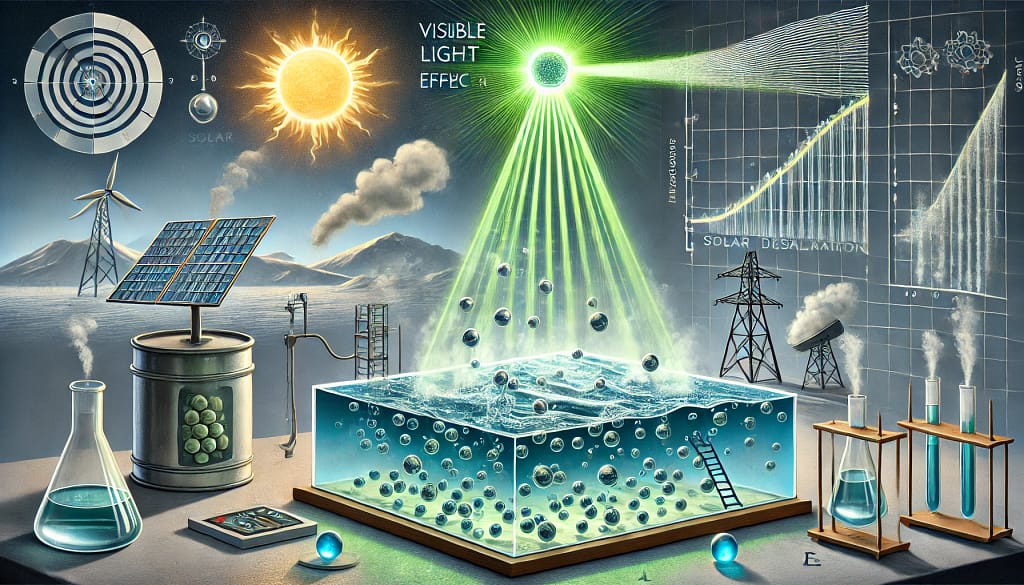A Revolutionary Discovery
Introduction
The photomolecular effect is a groundbreaking phenomenon recently discovered by researchers at MIT. This effect demonstrates that visible light, rather than heat, can induce the evaporation of water. This discovery not only challenges traditional understandings of evaporation but also opens up new possibilities for various scientific and industrial applications.
Inventors and Discovery
The photomolecular effect was identified by a team led by postdoc Yaodong Tu and Professor Gang Chen at MIT. Their research revealed that under specific conditions, photons of light could impart sufficient force on water molecules at the water-air interface to cause evaporation. This effect is analogous to the photoelectric effect discovered by Heinrich Hertz and explained by Albert Einstein, where light liberates electrons from a material (MIT News) (EurekAlert!) .
Mechanism and Evidence
The researchers conducted numerous experiments to validate the photomolecular effect. Key observations included:
- Temperature Profile: The air temperature above the water surface cooled down and leveled off, indicating that thermal energy was not driving the evaporation.
- Angle and Polarization Dependence: The effect was strongest when light hit the water surface at a 45-degree angle and with transverse magnetic polarization.
- Color Dependence: Green light, where water is most transparent, surprisingly induced the highest evaporation rates (SciTechDaily) (EurekAlert!) .
These observations suggest that photons can directly knock water molecules loose from the surface, leading to evaporation without the need for heat (Phys.org) (EurekAlert!) .
Solving Climate Mysteries
The photomolecular effect may resolve long-standing discrepancies in climate science, particularly concerning how clouds absorb sunlight. Traditional measurements have often shown clouds absorbing more sunlight than expected. This effect provides a plausible explanation for this anomaly, as additional evaporation caused by light could account for the excess absorption (Phys.org) (EurekAlert!) .
Future Applications
The implications of the photomolecular effect are vast. Potential applications include:
- Solar-Powered Desalination: The effect can significantly enhance the efficiency of desalination processes by utilizing sunlight directly to induce evaporation, bypassing the need to convert light to heat first. This could lead to more cost-effective and efficient water purification systems (MIT News) (EurekAlert!) (The YU Observer) .
- Industrial Drying Processes: Industries that rely on drying, such as paper mills and food processing, could benefit from this effect, reducing energy consumption and increasing efficiency (SciTechDaily) (EurekAlert!) .
- Climate Modeling: Incorporating the photomolecular effect into climate models could improve predictions of fog and cloud formation, leading to better understanding and management of weather patterns and climate change (The YU Observer) .
Conclusion
The discovery of the photomolecular effect marks a significant advancement in our understanding of light-water interactions. It holds promise for transformative applications in various fields, from climate science to industrial processes. As research continues, the full potential of this effect will likely become even more apparent, heralding a new era of technological and scientific innovation (MIT News) (Phys.org) (The YU Observer) .

The illustration depicts the photomolecular effect, where visible light induces the evaporation of water. The image showcases a beam of green light striking a water surface at a 45-degree angle, with water molecules being knocked loose and rising as vapor. In the background, there’s a setup with LEDs and a water container, along with representations of industrial applications like solar desalination and climate modeling. Temperature readings highlight the cooling and leveling off above the water surface.
This illustration captures the essence of the photomolecular effect and its potential applications in various fields.
Make your own website!
Make your own inventive corner
Ready to start your own website and share your passion with the world? Join me and unlock step-by-step training to build your online presence just like I did! Use my links if you want me as your coach!


